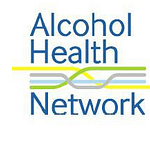This content is part of the Vision for the Public Sector Zone and the Wellbeing Zone
Case Study: Hertfordshire County Council
What did Hertfordshire County Council want to achieve?
Hertfordshire County Council wanted to tackle the increasing risk among their employees of largely preventable diseases related to inactivity and obesity. In particular, Hertfordshire wanted to reach office workers who struggled to fit exercise into their day or who didn’t seem sporty.
What did they do?
The StepJockey initiative was rolled out across more than 25 public buildings and offices including the County Hall, libraries, fire stations and other administrative buildings in Hertfordshire. The StepJockey smart signs were installed to clearly show the calorie-count for each staircase, prompting employees and visitors to take to the stairs. They also included evidence-based health messages covering off the health benefits of taking the stairs and flagging up hidden exercise opportunities.
Alongside the signs, all employees were encouraged to download the free StepJockey app, which allows individuals to track their stairclimbs and set themselves daily goals.
What were the results?
The use of stairs, lifts and escalators was base-lined using sensors over several weeks, and then when the signs were put up they were monitored for four weeks to assess change in use.
The results:
• The presence of the smart signs resulted in significant increases in stair usage across all 3
buildings (p < 0.0001; n=261,062)
• Upward journeys were more influenced than downward, which sounds almost counter
intuitive, the highest uplift being 29%
• 92% of new stair climbers reported that stair climbing had become habitual, which is
important for sustainability
• The ability to track stair usage resulted in a five-fold increase over baseline and an eight
fold increase when users were incentivised to compete for shopping vouchers.
Among those most influenced by the intervention were target populations Hertfordshire wanted to
reach:
• Overweight (BMI > 25)
• Infrequent takers of physical activity (< 2 x per week)
• Women
• 25-35 year olds
A further benefit, as a Local Authority, was linked to the environmental targets to reduce carbon use by reducing lift and escalator journeys. Lifts and escalators can be inefficient in carbon terms so the decrease in lift and escalator journeys will support other interventions in place to cut their carbon footprint.
What do the public health team think?
Jim McManus, Director of Public Health at Hertfordshire County Council says: “StepJockey takes the evidence and insights from social and behavioural sciences and turns them into something simple and easy to take up. Our return in terms of reduced carbon emissions and healthier employees far exceeds the small initial investment.”
A PDF version of this case study can be downloaded here.
More information
The StepJockey initiative is backed by the Department of Health via the Small Business Research Initiative, a government scheme that promotes innovation in areas that bring public benefits.
This content was provided to Engage for Success by:
Nina Whitby, StepJockey
T: 0203 397 8377
M: 07870 279521
T: @StepJockey
W: https://www.stepjockey.com/
F: https://www.facebook.com/Stepjockey
B: http://blog.stepjockey.com/




